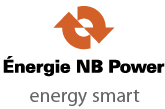Blog
Unfortunately, no results were found, try searching a higher level.
Recent Comments
- By Derrick Bird on How run-of-the-river stations work during the spring freshet
- By Blake Chedore on Mactaquac and the Freshet
- By Terry Ross on Mactaquac and the Freshet
- By Md Akhtaruzzaman on Local nuclear expert Paul Thompson Receives Award for Industry Contributions
- By Craig Wakeln on Kathleen Duguay Receives National Award Recognizing her Contributions to Nuclear Education and Communication
Recent Posts
Archives
- February 2025
- February 2024
- March 2024
- December 2024
- February 2023
- April 2023
- June 2023
- December 2022
- September 2022
- August 2022
- June 2022
- January 2022
- December 2021
- November 2021
- September 2021
- July 2021
- May 2021
- March 2021
- January 2021
- December 2020
- November 2020
- October 2020
- August 2020
- July 2020
- June 2020









